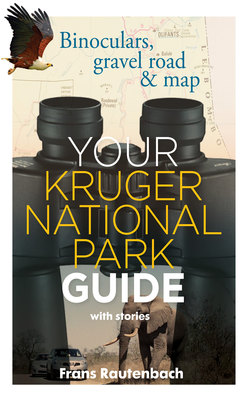Читать книгу Your Kruger National Park Guide - With Stories - Frans Rautenbach - Страница 12
На сайте Литреса книга снята с продажи.
ОглавлениеPrinciple One: Do the miles
“One year I receive a brief to defend a group of agitators in the magistrate’s court at Giyani, a small town in Limpopo just west of the northern half of the game reserve – about the same parallel as Shingwedzi.
I decide that, rather than travel through Pietersburg (now Polokwane), I’ll enter the park in the south and make my way northwards. I’ll find a place to sleep somewhere, I reckon.
All I have is 24 hours… but in that time I cover many kilometres and experience many strange things.
The first happens at about lunchtime when I stop on the bridge across the Olifants river. Right in front of me, in the dry sand of the river bed, is the half-eaten carcass of a buffalo. And inside the carcass lies a giant black-maned lion framed by the crescent-shaped ribs of the buffalo. Clearly full to the brim, it observes me languidly in the afternoon heat.
The next morning I am at the gate of the camp when it opens at six. I have to be at the magistrate’s court at nine. It’s still half-dark and I switch on my headlights. I’m completely alone on the road, driving as fast as the law allows. Court doesn’t tolerate latecomers.
Suddenly I see a shape ahead in the semi-dawn. I brake hard. It’s a hyena, something so large clamped in its jaws it almost drags on the ground. As I approach I realise it’s the hind leg of a large antelope that’s been chewed off at the knee, red meat and white sinew protruding from the open end, a black hoof from the other end. Then the stench hits me through my half-open window.
I shout almost involuntarily and the hyena gallops grotesquely over the road, disappearing into the tall grass. Nature red in tooth and claw, indeed.
That morning I see a number of animals I would have stopped for had I had the time – including a giant elephant bull along the road, and a black-maned lion standing five metres from my car, posing in profile like an animal on a postcard.
At nine o’clock I walk into court at Giyani. But my thoughts are far away.”
It goes without saying that the chances of coincidentally seeing a lion if you were to drive, say, within 10 kilometres around the rest camp, would be about nil.
The main reason people frequently spot lions in the game reserve is that they drive considerably more than 10 kilometres. Most visitors book their accommodation in different camps, and most camps are situated reasonably far apart. As a child I could never understand how it was that for three days in Skukuza we would mostly see only a handful of impala and warthogs, and then always more species – and yes, predators – on the days we travelled to, say, Letaba. Today I understand that, statistically speaking, your chances of seeing large quantities of game are infinitely better if you drive long distances. It is as simple as that.
So, do the miles. Book your accommodation in such a way that you are forced to drive long distances. Plan your day so that, even if you spend the night in the same place as the day before, select a destination far from your rest camp where you can rest in the middle of the day, have a picnic, drink tea or just admire the view. Deliberately choose detours and circuitous routes to your destinations. Such long travels are not just fun because you see more of the environment; you also see much more game in this way. And it turns your holiday into an adventure.
